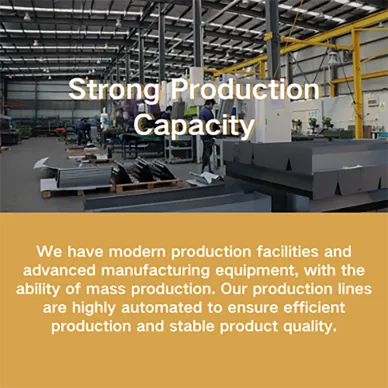gantry crane system
Understanding Gantry Crane Systems Features and Applications
Gantry cranes are essential pieces of equipment widely utilized in various industrial applications for lifting and moving heavy loads. Characterized by their overhead structure resembling a giant frame, these cranes operate on a set of tracks and can traverse over a designated area, making them particularly effective in manufacturing facilities, shipyards, and construction sites.
Design and Structure
A typical gantry crane consists of two vertical legs that support a horizontal beam, known as the girder. The legs are often equipped with wheels that run on rails, allowing for movement along a fixed path. This design enables the crane to lift objects from one location and place them in another, significantly enhancing operational efficiency. The height and span of gantry cranes can vary widely depending on the application needs, making them customizable to fit specific requirements.
Types of Gantry Cranes
Gantry cranes come in various forms, including full gantry cranes, semi-gantry cranes, and portable gantry cranes. Full gantry cranes feature two vertical legs that run on rails, providing excellent mobility and stability for larger loads. Semi-gantry cranes, on the other hand, have one leg on rails and the other supported by a fixed structure, suitable for applications where space may be limited. Portable gantry cranes are smaller and can be moved manually, making them ideal for light-duty lifting tasks or in facilities with flexibility requirements.
Applications of Gantry Cranes
gantry crane system

The versatility of gantry cranes allows them to be utilized across numerous industries. In manufacturing plants, they are employed to lift heavy machinery and move components during assembly processes. In construction, they can be used for hoisting building materials, facilitating faster and safer operations on-site. Shipyards rely heavily on gantry cranes for loading and unloading containers, significantly speeding up logistics.
Additionally, gantry cranes are indispensable in warehouses for organizing products and enhancing storage capabilities. Their ability to navigate through narrow aisles allows for more efficient use of space compared to traditional forklifts. Furthermore, with advancements in technology, many gantry crane systems are now equipped with automated features, improving safety and operational efficiency.
Safety Considerations
While gantry cranes provide substantial benefits, safety considerations are paramount. Operators must be trained to handle loads safely and be familiar with the crane’s operational limits. Regular inspections and maintenance routines are essential to ensure the equipment remains in safe working condition. Implementing proper signaling systems and adhering to weight restrictions can significantly reduce the risk of accidents in the workplace.
Conclusion
In summary, gantry crane systems play a critical role in modern industrial operations, providing an effective means to lift and transport heavy loads. Their unique design and adaptability allow them to be utilized in various settings, from manufacturing to shipping and construction. As industries continue to evolve, the demand for efficient lifting solutions like gantry cranes will undoubtedly grow, underscoring their importance in enhancing productivity and operational efficiency. By prioritizing safety and investing in training and maintenance, businesses can fully leverage the benefits that gantry cranes offer, thereby contributing to a safer and more effective work environment.
-
Unlock Seamless Relocation with Our Heavy Equipment Moving ExpertiseNewsJun.06,2025
-
Unleash Unrivaled Flexibility with Our Adjustable Gantry CraneNewsJun.06,2025
-
Unleash Heavy-Duty Efficiency with Our Industrial Gantry Crane SolutionsNewsJun.06,2025
-
Revolutionize Steel Handling with Our Magnetic Lifter RangeNewsJun.06,2025
-
Master Equipment Mobility with Premium Machinery Mover SolutionsNewsJun.06,2025
-
Elevate Your Material Handling with Magnetic Lifter TechnologyNewsJun.06,2025
-
YS Permanent Lifting Magnets: The Smarter Way to Handle SteelNewsMay.22,2025
